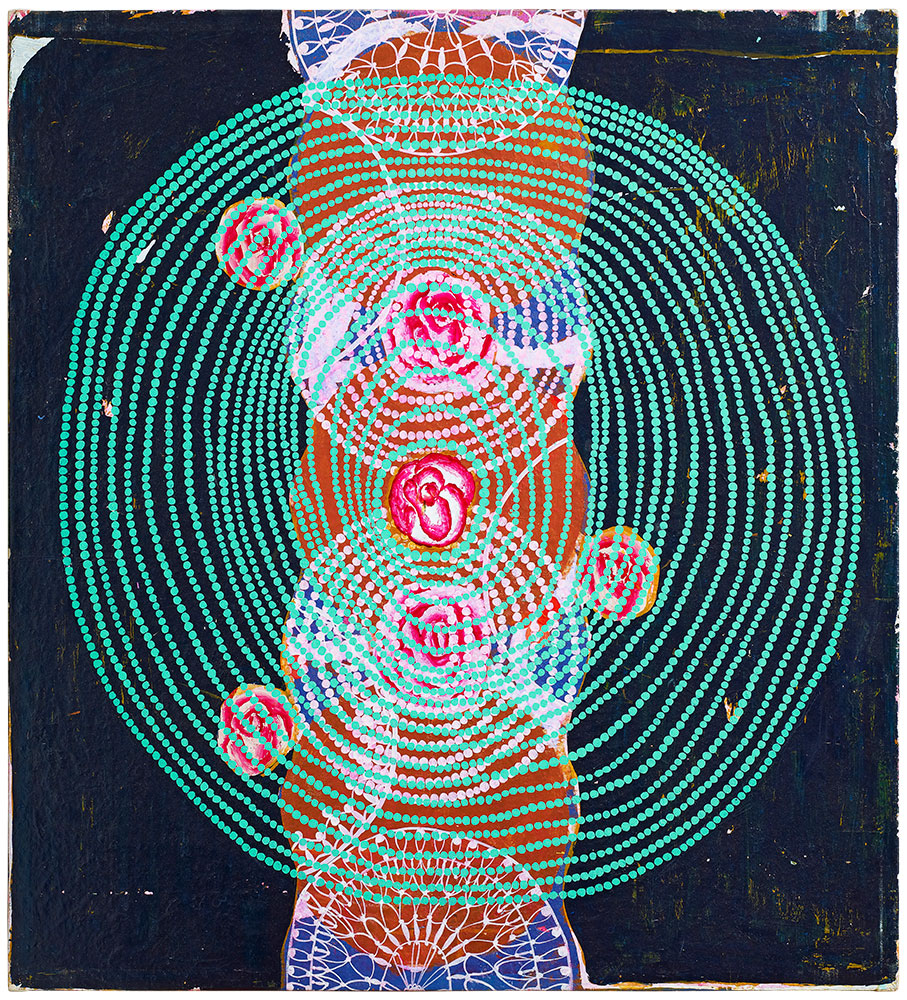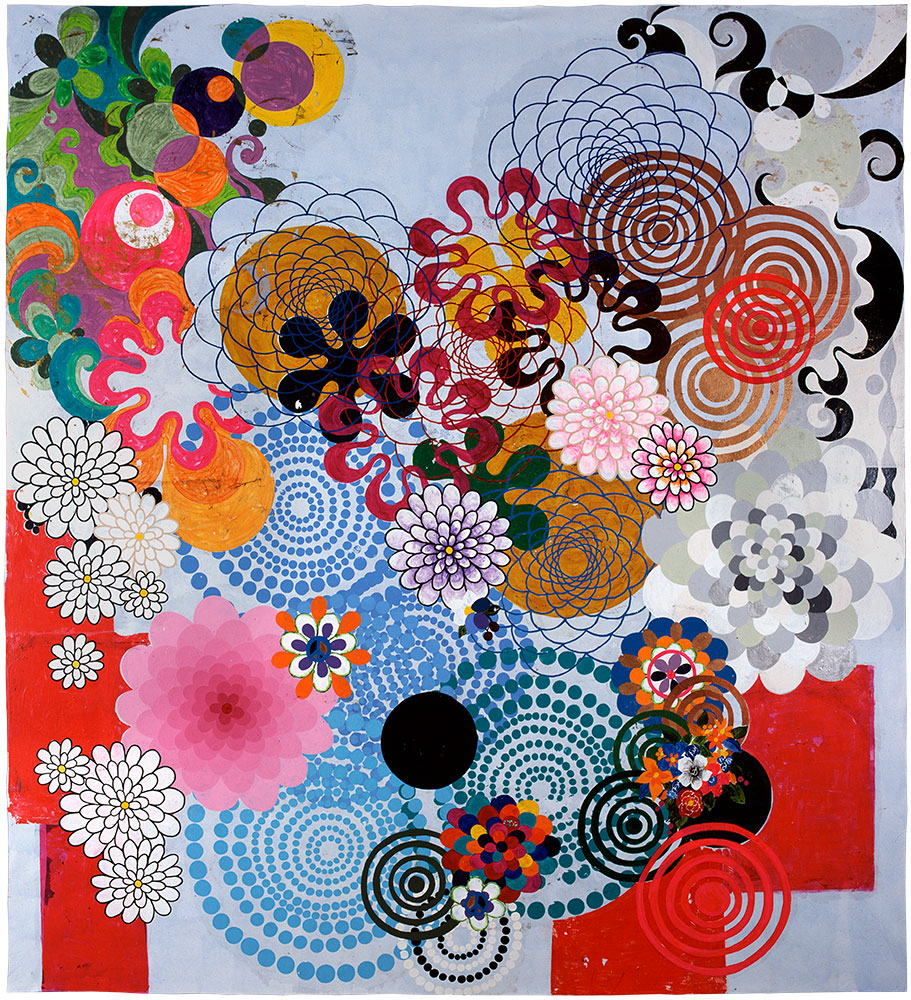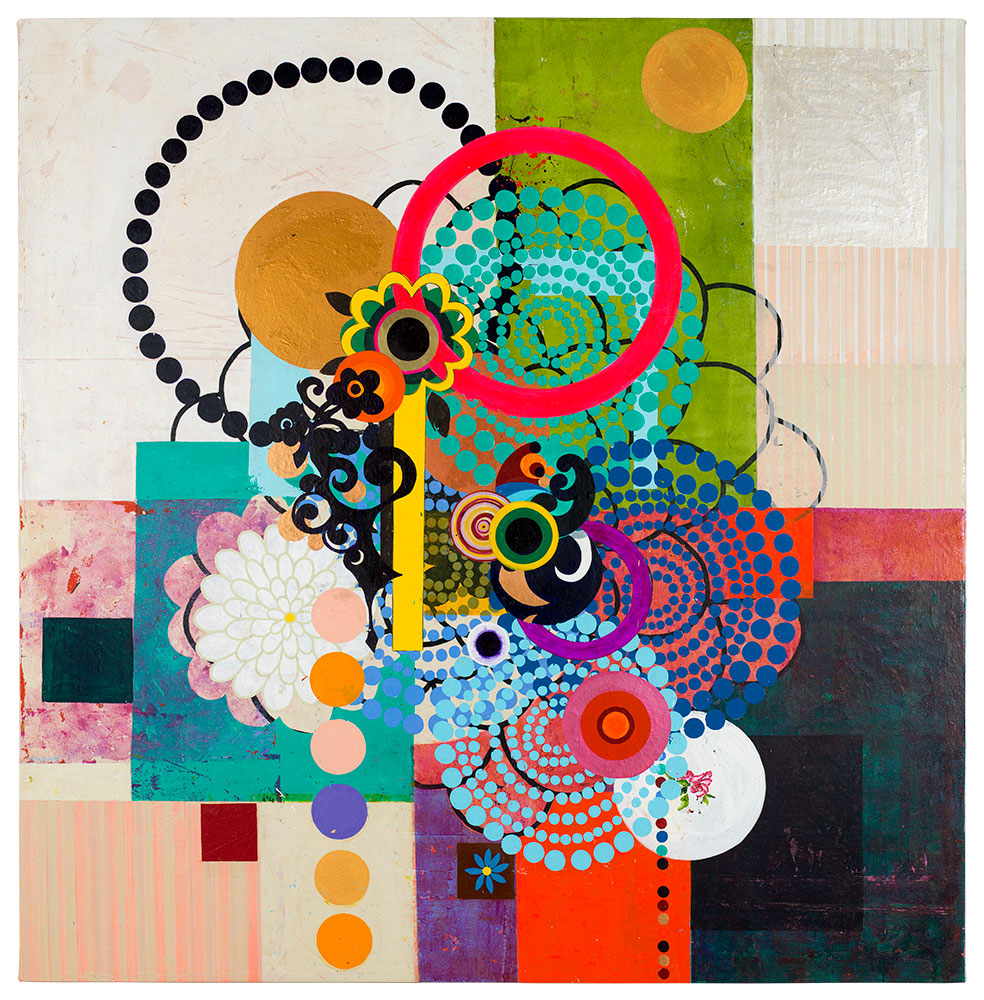PRESENTATION: Beatriz Milhazes-Maresias

Beatriz Milhazes is widely recognised as one of the leading abstract artists working today. She emerged in the 1980s as a leading figure in the important Brazilian art movement Geração Oitenta (1980s Generation), which moved away from the austere conceptual art of the previous decade and embraced painting as a form of energy and expression. Today, Milhazes is known for intensely colorful, large-scale abstract canvases which present energetic contradictions: from the tension between carefully planned construction and appearance of spontaneity, to slick surfaces that belie tiny cracks and layers.
By Efi Michalarou
Photo: Turner Contemporary Archive
“Maresias”, a survey of the work of Beatriz Milhazes features 20 key paintings and 5 works on paper from 1989 to more recent years. While tracing the evolution of Milhazes’ artistic approach over the past four decades, the exhibition highlights nature as an enduring and increasingly important theme in her work. This is echoed in the exhibition’s title “Maresias”, which refers to the salty ocean breeze that is part of Milhazes’ everyday life in the coastal city of Rio de Janeiro. Encouraging us to reflect on our own relationship with the environment, the exhibition also speaks to Turner Contemporary’s coastal location and the new strand of the gallery’s programme dedicated to contemporary ecological issues. A major installation is also presented. The exhibition opens with Milhazes’ paintings from the late 1980s and 1990s, including “Eu só queria entender por que ele fez isso” (1989) and “Casa da Maria” (1992). Here, Milhazes incorporates lacework, ruffles and gilded rosettes onto canvases rich with references to Rio Carnival Parade, Catholic iconography and Baroque colonial architecture. The early 1990s marked a breakthrough moment for Milhazes. Frustrated by the appearance of brushstrokes, which she saw as signs of the artist’s hand, Milhazes developed her distinctive “monotransfer” technique in which she paints her own motifs onto plastic sheeting before transposing them onto canvas. This process offers the possibility to retain the fidelity of the colors, and intensify the effects of fluorescent and metallic pigments. It also allows Milhazes to create a smooth and defiant surface without losing the painterly quality, from which she can build her images, adapting the concept of collage to her painting practice. Works from the next decade are on display, from expansive paintings such as “Fleur de la passion: Maracujá” (1995–6) to the denser compositions of “Maresias” (2002) and “Férias de verão” (2005). These paintings, some of which were shown in the Brazilian Pavilion at the Venice Biennale in 2003, explore how Milhazes has expanded and refined the monotransfer technique in canvases characterised by geometric shapes, arabesque lines and dazzling color. Milhazes has recently said that, “My endearments are made of the breath and speed of the forests, the flowers, the leaves. The power of the waves, the water, the oceans. The fascinating animal shapes. The movement of the Earth’s rotation, the Sun, the Moon, day, night, the sky, global connectivity.” Reflecting this, the Large South Gallery will be dedicated to the spiritual experience of being in nature. Motifs such as abstracted flowers, oceans, trees, plants, suns and stars reveal Milhazes’ close attention to the landscape, the changing seasons and nature’s beauty and fragility. Works influenced by the botanical gardens and Tijuca forest near her studio, as well as Rio de Janeiro’s ocean front, include “O sol de Londres” (2003) as well as the more recent “Douradinha em cinza e marrom” (2016) and “Margueritola” (2014–15). Together, they reflect how Milhazes’ use of forms including waves, petals and circles has become more pronounced, characterising her distinctive visual language. The Irene Willett Gallery will present a selection of collages, sharing the artist’s approach to this medium combining found papers and packaging. Site-specific commissions have long been an important part of Milhazes’ practice. In recognition of this, Milhazes bring san iteration of “O Esplendor”, following the installation at the Long Museum, Shanghai, in 2021. This site-specific installation in colored vinyl cut outs bathes two floors of the gallery in colo0red light and create a spectacular dialogue with the view onto the North Sea. In turn, the installation is also visible from the beach.
Photo: Beatriz Milhazes, O Diamante, 2002, Acrylic on canvas, 250 x 381cm, “la Caixa” Foundation Contemporary Art Collection, Photo Vicente de Mello. © Beatriz Milhazes Studio
Info: Melissa Blanchflower and Emma Lewis, Curator, Turner Contemporary, Rendezvous, Margate, Kent, United Kingdom, Duration: 27/5-10/9/2023, Days & Hours: Tue-Sun 10:00-17:00, https://turnercontemporary.org/



